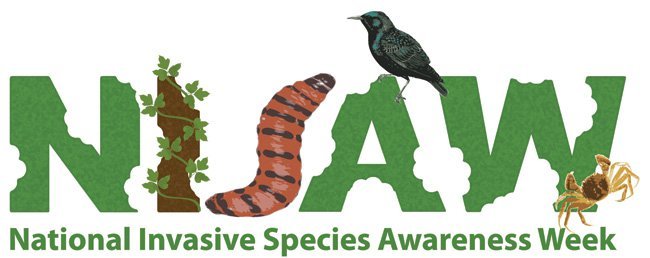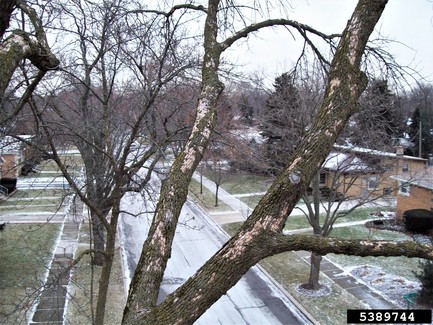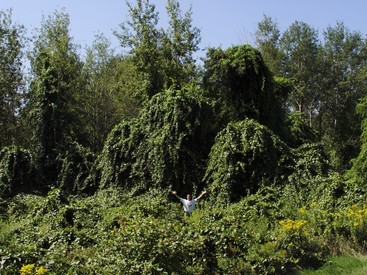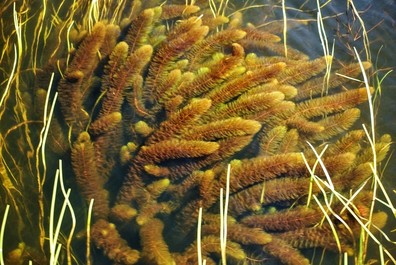10 Ways to Observe National Invasive Species Awareness Week and Prevent the Spread of Invasive Species in Maine
Week I: February 24 - February 28
Week II: May 16 – May 23
"Blonding" on ash trees; photo by Jim Tresouthick, Bugwood.org
1. Look for woodpecker blonding on ash trees. This shallow flecking of the bark by woodpeckers is a common sign of an Emerald Ash Borer (EAB) infested ash tree. When you think you see blonding, take the best quality photo (phone pictures are okay), note your location, and report the findings on our EAB Report Form.
2. Learn how to identify invasive plants that might be growing on your property. For help recognizing problem plants, consider ordering a copy of The Maine Natural Areas Program’s Maine Invasive Plant Field Guide. The guide has detailed photos and recommended control methods to help to reclaim the landscape. Another great way to increase invasive plant awareness is to volunteer with a local land trust or a conservation commission, to help remove invasive plants on local public lands.
3. Be on the lookout for the invasive tree of heaven, which is host to a new invasive insect threat, the spotted lanternfly. If you think you have seen tree of heaven in Maine, please report it to invasives.mnap@maine.gov.
Asiatic bittersweet vines smother trees and wildflowers; photo courtesy of Maine Natural Areas Program
4. Protect our forests from invasive earthworms! (Little known fact: There are no earthworms native to Maine.) European and Asian earthworm invaders destroy forest soils with their voracious feeding. The most destructive worms are known as crazy worms, jumping worms, or snake worms. They spread when we move plants, soil, mulch, or leaves, or when bait worms are left on the banks of waterways.
5. Clip those winter webs. For those of us in browntail moth territory, right now is a great time to clip out webs of overwintering browntail moth caterpillars before they become active. Learn more.
6. Protect our waterways from invasive aquatic plants by following Clean, Drain, Dry. Want to do more? Join Lake Stewards of Maine, the longest-standing, state-wide citizen lake monitoring program in the U.S.
7. Play-Clean-Go! Clean hiking boots, waders, boats and trailers, off-road vehicles, and other gear to stop invasive species from hitching a ride to a new location. Learn more at PlayCleanGo.org.
Pond is in Monmouth, ME; Milfoil photo by Ryan Burton
8. When planning a camping trip, also plan on getting firewood at the destination. The simple step of leaving camping firewood at home is a big step toward helping prevent the spread of invasive forest pests. Buy the firewood at the campground and visit FirewoodScout.org to find other local sources.
9. Don’t release aquarium fish and plants, live bait, or other exotic animals into the wild. Research before buying an exotic pet and commit to its care; learn more at habitattitude.net. And remember, it is illegal to import any freshwater fish into the state of Maine without a permit from the Maine Department of Inland Fisheries and Wildlife.
10. Be social, help us spread awareness: Tell friends, family, neighbors and others about invasive species and the harm they do to our environment and health! Maine is a big state, and we can’t get the word out to everyone without your help. Please encourage them to get involved with National Invasive Species Awareness Weeks in their own way. Here are some resources to help get started:
Invasive earthworms degrade forest soil; photo by Wade Simmons
| 






